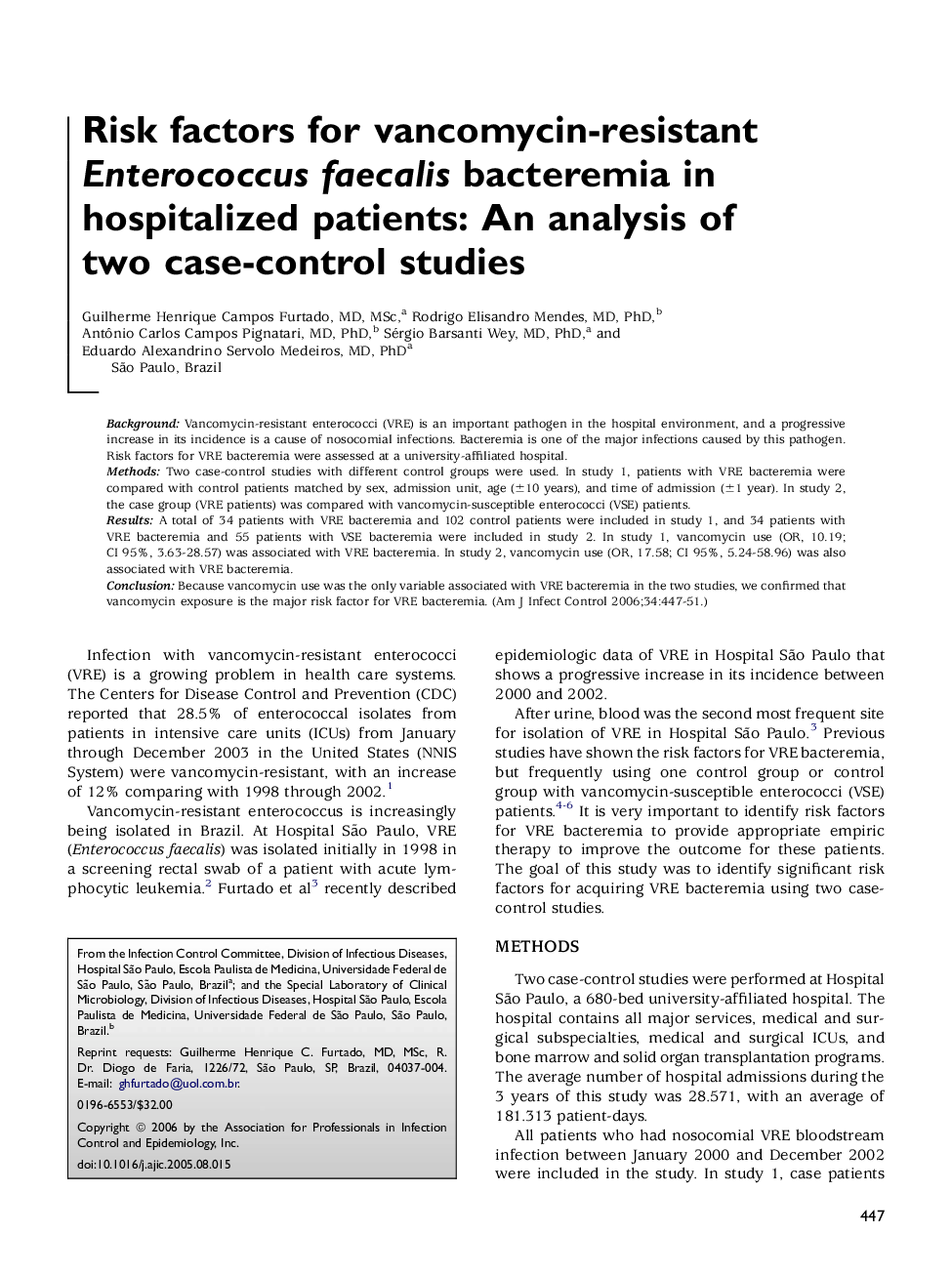| Article ID | Journal | Published Year | Pages | File Type |
|---|---|---|---|---|
| 2639857 | American Journal of Infection Control | 2006 | 5 Pages |
BackgroundVancomycin-resistant enterococci (VRE) is an important pathogen in the hospital environment, and a progressive increase in its incidence is a cause of nosocomial infections. Bacteremia is one of the major infections caused by this pathogen. Risk factors for VRE bacteremia were assessed at a university-affiliated hospital.MethodsTwo case-control studies with different control groups were used. In study 1, patients with VRE bacteremia were compared with control patients matched by sex, admission unit, age (±10 years), and time of admission (±1 year). In study 2, the case group (VRE patients) was compared with vancomycin-susceptible enterococci (VSE) patients.ResultsA total of 34 patients with VRE bacteremia and 102 control patients were included in study 1, and 34 patients with VRE bacteremia and 55 patients with VSE bacteremia were included in study 2. In study 1, vancomycin use (OR, 10.19; CI 95%, 3.63-28.57) was associated with VRE bacteremia. In study 2, vancomycin use (OR, 17.58; CI 95%, 5.24-58.96) was also associated with VRE bacteremia.ConclusionBecause vancomycin use was the only variable associated with VRE bacteremia in the two studies, we confirmed that vancomycin exposure is the major risk factor for VRE bacteremia.
